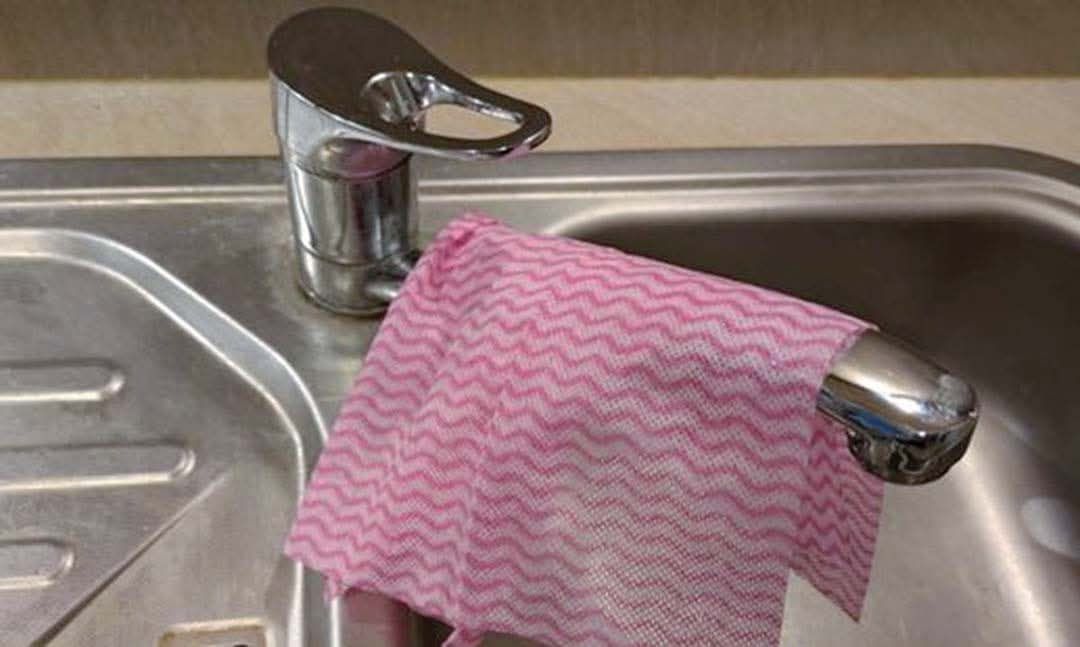ADVERTISEMENT
Why You Should Never Hang a Wet Cloth Above the Faucet: A Simple Yet Important Household Tip
We’ve all been there—after washing dishes, wiping down counters, or cleaning up spills, we often toss a wet cloth or towel over the faucet to dry. It’s a quick and convenient way to hang the cloth and make use of the available space. But, before you make this a regular habit, it’s worth considering why it might not be the best idea.
Hanging a wet cloth above the faucet can have unintended consequences, both for your household and your cloth itself. From hygiene issues to potential damage to your fixtures, there are several reasons why this seemingly harmless action might be problematic. Let’s explore why you should rethink this habit and what you can do instead.
1. Moisture Can Lead to Mold and Mildew Growth
The most pressing concern with hanging a wet cloth over the faucet is the increased likelihood of mold and mildew growth. Faucets, especially in areas like kitchens and bathrooms, are often exposed to high humidity levels. When you hang a wet cloth over the faucet, the excess moisture in the cloth can transfer to the surrounding area, creating an ideal environment for mold and mildew to grow.
Mold thrives in damp, dark environments, and the combination of a wet cloth and the moisture around the faucet can make your kitchen or bathroom more prone to fungal growth. Over time, this can lead to unpleasant odors, unsightly stains, and potentially harmful spores that can affect the air quality and your health.
2. Cloth Will Take Longer to Dry
When you hang a wet cloth over the faucet, it may not dry properly. The faucet and the surrounding area may not provide enough air circulation for the cloth to dry quickly, especially if the cloth is hanging in a space where there is limited airflow. This extended drying time can leave your cloth damp for longer than necessary, which, as mentioned earlier, can lead to mold and mildew buildup.
Additionally, the wet fabric might become stiff or even develop an unpleasant smell if it’s left hanging in an area that doesn’t allow moisture to evaporate efficiently.
3. Risk of Water Damage to the Faucet and Sink Area
Hanging a wet cloth over the faucet can also pose a risk to your faucet and sink area. When the fabric is wet, it can drip water onto the faucet, sink, and countertop, leading to water damage. Over time, this constant moisture can affect the finish of your faucet, potentially causing rust or mineral buildup. The sink area could also suffer from discoloration, water stains, or even weakening of the seal around the sink or faucet.
Even if the faucet and sink appear to be unaffected initially, prolonged exposure to moisture can cause wear and tear that could lead to expensive repairs or replacements down the line.
4. Limited Access to the Faucet and Sink
Hanging a cloth over the faucet can obstruct your access to it, making it harder to use the sink efficiently. Whether you’re washing your hands, filling a pot with water, or cleaning up messes, a wet cloth hanging over the faucet can get in the way, creating unnecessary frustration. It may even cause water to spill out of the sink, especially if the cloth partially blocks the faucet’s water flow.
In addition, a damp cloth can also make it harder to clean or sanitize the faucet itself, since the cloth is hanging directly on top of the area you need to maintain.
For Complete Cooking STEPS Please Head On Over To Next Page Or Open button (>) and don’t forget to SHARE with your Facebook friends
